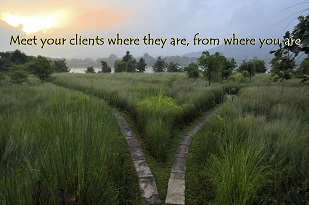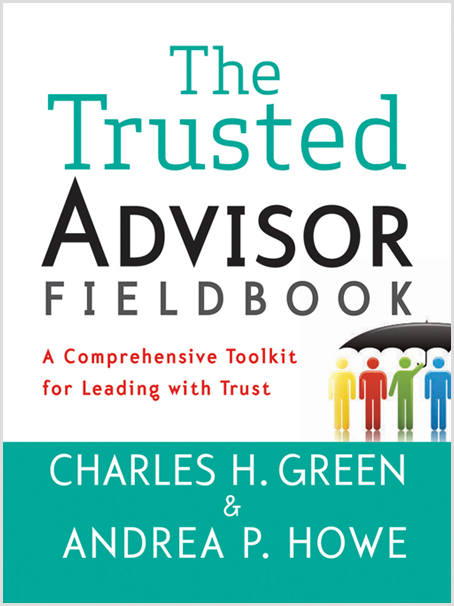This post is part of our Weekly Tips series.
The subject of authenticity came up recently in a workshop I was leading, and the conundrum of how to be trustworthy by simultaneously being yourself and being someone who adapts easily to others. Something occurred to me in the discussion that I’d never quite articulated before, which is that the answer lies in staying within our own authentic range.
Indulge, if you would, illustration by this brief story.
I’m naturally a pretty optimistic person, and when I was a 20-something, consulting mostly to U.S. federal government clients, I was determined not to get sucked into the common belief that government workers didn’t care about their work and were just clocking hours.
I was assigned to work with “Harold” on the initiative-du-jour to “transform the government.” Harold was within months of retirement after 20+ years of service—he was literally counting the days. He had also already witnessed more efforts to transform the government than I had turned in timesheets. At this point in his career, he wasn’t exactly an enthusiastic, high-energy guy. (I’m not sure he ever was, but that’s beside the point.)
[Tweet “Here’s how you can be #trustworthy by both being yourself AND being someone who adapts easily to others” #getreal]
Nonetheless, it was my job to engage him as a key stakeholder. And by golly, I wasn’t going to let his demeanor get me down. No, sir. I would be contagious with my positivity and lift him up!
I distinctly remember appearing in his doorway one morning, several weeks into the project. Before I had a chance to speak, Harold looked up at me over the top of his bifocals, blinked slowly, sighed loudly, and said, “You’re so … perky.”
It was clear it wasn’t a compliment. It was also clear my Harold Engagement Strategy was backfiring.
The challenge for me, then, was to be authentic while also finding a better way to connect with Harold—to build a better relationship, sure, but also to get what I needed from him before he departed.
What I discovered was that I have a range. My optimism often manifests outwardly in a high-energy way. I can also be quiet and reflective. I live, authentically, on a spectrum. Harold needed me to express the lower end of my range with him, for his sanity and for the benefit of our working relationship. So I got to practice staying fundamentally optimistic while (1) being more empathetic and (2) being my lower-key self.
It seems to me that you, too, have a spectrum—lots of them, actually—for different dimensions of your personality, and for different circumstances. Which means you can tune into others and adjust without compromising your integrity.
You’ll be authentic, effective, and trustworthy as long as you stay within your range.
Make It Real
This week, think about the ways you are simultaneously two things on the ends of different spectra—for example, energetic and quiet, decisive and thoughtful. Then think of three clients and place them on those spectra. Look for ways to meet them where they are, from where you are.
Learn More

Read more about trust, honesty and authenticity, from our friends at Trusted Advisor Associates, or brush up on ways to practice being authentic in Chapter 8 of The Trusted Advisor Fieldbook.
Andrea Howe
Latest posts by Andrea Howe (see all)
- A lesson from my own trust “fail” in my first-ever client meeting - April 15, 2024
- Why choosing silence in the face of awkwardness can be a trust tragedy - March 21, 2024
- What NOT to do when you think you’re being ghosted - February 21, 2024
